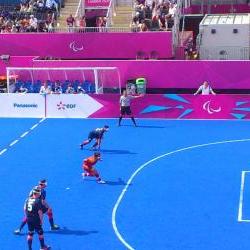Posts Tagged ‘competition’
Coaching at a weightlifting competition
Three things I had in mind to help the weightlifters Last weekend I coached three of our club weightlifters at the Wild Boar Tier 3 event: Gabby, Will and Chris. This was their first competition outside of the club. Whilst every ‘S&C coach’ does ‘Olympic Lifts’ they do not coach the lifts in competition. There…
Read MoreHow to start weightlifting pt3: your first competition
Your first weightlifting competition. Entering your first competition is a big step for every weightlifter. Every single Olympic weightlifter has had to enter as a beginner at some point. Whilst you may not be able to control your nerves, and you can’t control what the other entrants are lifting, you can prepare yourself by eliminating…
Read MoreParalympic review
 Well, it’s over.
Well, it’s over.
I had a great day at the Paralympics last Thursday watching 3 of our athletes competing in the Blind Football playoffs.
Dan James, Robin Williams and Keryn Seal were part of the GB team that tied their match against China at full time 1-1.
This led to a penalty shoot out which GB lost. The boys then played in the 7/8th playoff against Turkey on Saturday where they won 2-0.
Read MoreJudith Hamer: Wheelchair Basketball
 Judith Hamer plays for the Great Britain under-25s basketball team.
Judith Hamer plays for the Great Britain under-25s basketball team.
I have worked with her for the last 3 years or so as part of the TASS scheme based at Exeter University.
(This picture shows her sporting her bronze medal from the recent European Championships and her new leg!)
Read MorePeaking for fencing competitions
At the H&W competition last weekend, one current Excelsior athlete (Chris Hay) came first, and one alumni (Louise Helyer) came 2nd in their respective categories.
Well done to both. Other athletes remarked on their own inability to produce results on the day, despite just coming back from a winter training camp in Hungary.
Read More
